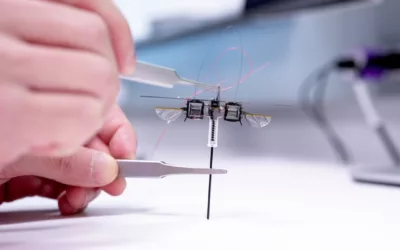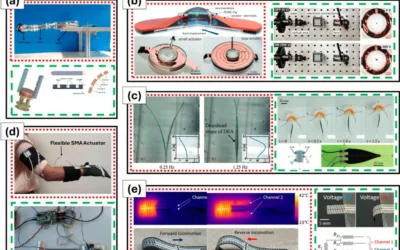In a significant development for the United States military, Deputy Secretary of Defense Kathleen Hicks revealed plans to deploy thousands of autonomous weapons systems within the next two years to counter China’s increasing influence. This initiative, known as Replicator, aims to collaborate with defense and technology companies to manufacture cost-effective systems for all branches of the military.
The emergence of military systems with varying levels of autonomy has evolved over the past decade. However, the scale and ambition of this announcement highlight a pivotal shift in the landscape of warfare: the era of combat-ready robots is for better or worse upon us.
The Rise of Military Robotics
Over the last decade, extensive advancements have been made in the development of advanced robotic systems designed for military applications. Many of these innovations are based on adapting commercial technologies, which have become more capable, affordable, and widely accessible.
Recent focus has shifted towards harnessing these technologies for real-world combat situations, a reality exemplified by Russia’s actions in Ukraine. The use of loitering munitions, or robot air vehicles, has become common for identifying and neutralizing armored vehicles and artillery. Ukrainian naval attack drones have effectively disrupted Russia’s Black Sea fleet, forcing manned warships to remain docked.
Replicator Unveiled
In her announcement, Deputy Secretary Hicks emphasized the urgent need to revolutionize the way wars are waged. The Replicator program is set to deploy “attritable utonomous systems at the scale of multiple thousands, in multiple domains, within the next 18 to 24 months.”
Breaking down this statement, “autonomous” refers to robots capable of executing complex military missions without human intervention. “Attritable” implies affordability, allowing these robots to be used in high-priority missions where losses may occur but can be replaced due to their reasonable cost. “Multiple domains” signifies deployment across land, sea, air, and space – robots will be employed for diverse tasks in various environments.
Countering China’s Pacing Challenge
The primary focus of Replicator is to address the “pacing challenge” posed by China, which boasts a significant advantage in terms of sheer numbers of personnel, tanks, ships, missiles, and more. While the U.S. may have superior equipment, China’s quantity poses a unique challenge.
By rapidly deploying thousands of “attritable autonomous systems,” the Replicator program aims to provide the numerical advantage necessary to secure victories in future large-scale conflicts. A hypothetical battle for Taiwan, considered a looming concern, has been the focal point of discussions. Recent simulations suggest that swarms of robots could become the decisive factor for the U.S. in repelling a major Chinese invasion.
Looking Ahead
Replicator also has a forward-looking vision, seeking to establish long-term mass production of robots. Deputy Secretary Hicks underscored the program’s aim to ensure that China’s leadership contemplates the risks of aggression daily, deterring them from hostile actions in the years to come.
Ethical Considerations
One pressing concern surrounding autonomous systems is their adherence to the laws of armed conflict. Optimists argue that robots can be meticulously programmed to follow rules, potentially outperforming humans in adhering to guidelines even in the chaos of battle. However, pessimists highlight the unpredictability of combat scenarios, where robots might misinterpret and engage targets inappropriately.
To address these concerns, Hicks stressed a “responsible and ethical approach to AI and autonomous systems,” indicating that any system capable of lethal actions would still require formal authorization from a human operator.
A Global Shift
While the U.S. may be at the forefront of deploying large numbers of autonomous systems, other nations, including China, are likely to follow suit. The availability and affordability of technology developed for civilian purposes have made autonomous military drones accessible to a broader range of countries.
Middle and smaller powers, such as Libya, Israel, and Australia, have already deployed autonomous weapons. Australian initiatives, like the MQ-28 Ghostbat autonomous fast jet air vehicle and robot mechanized armored vehicles, underscore the global interest in this technology.
The Replicator initiative marks a significant stride in the evolution of autonomous military systems. Its impact on the future of warfare, both in terms of strategy and ethics, cannot be understated, and its effects are likely to reverberate worldwide.








